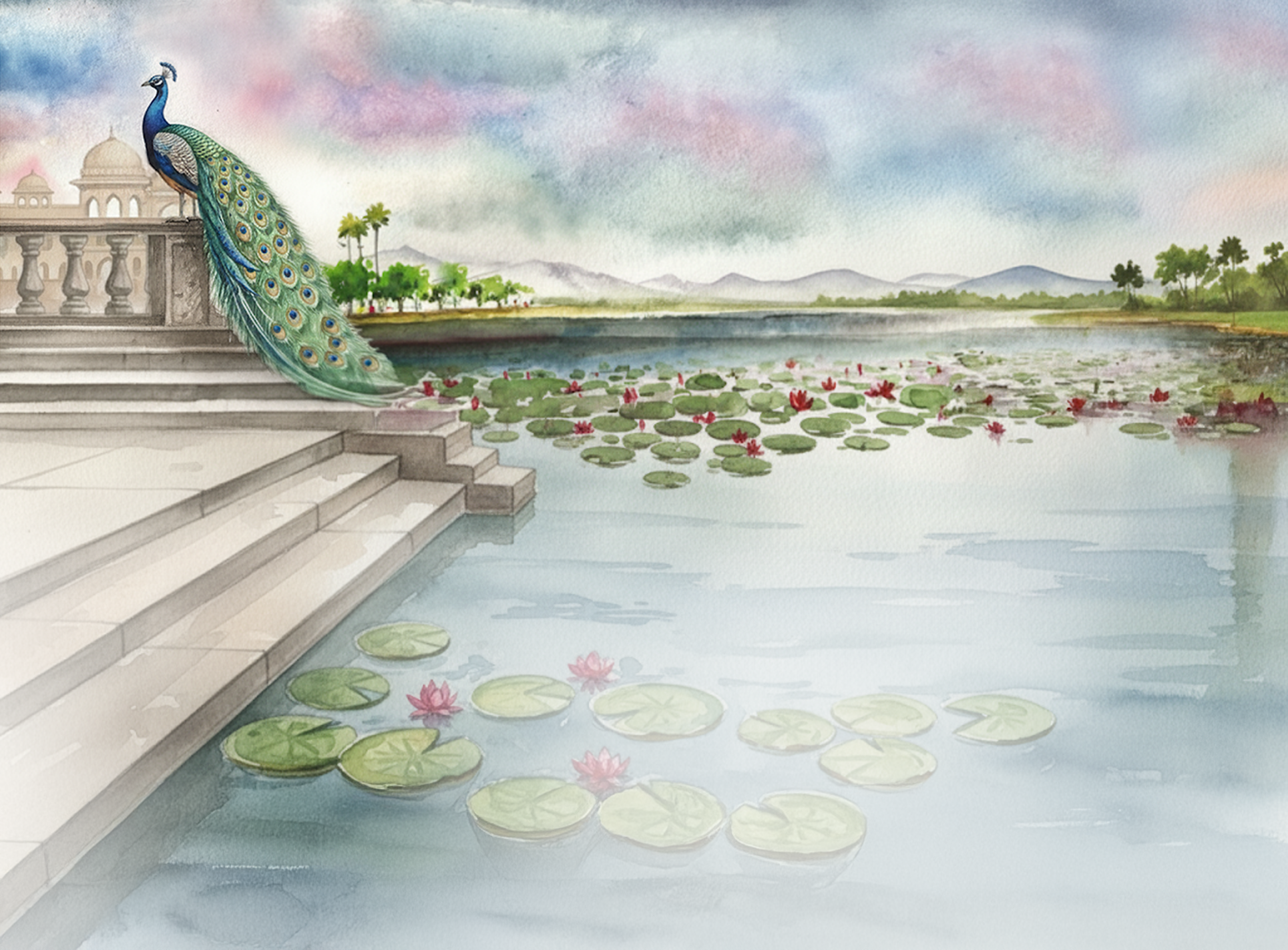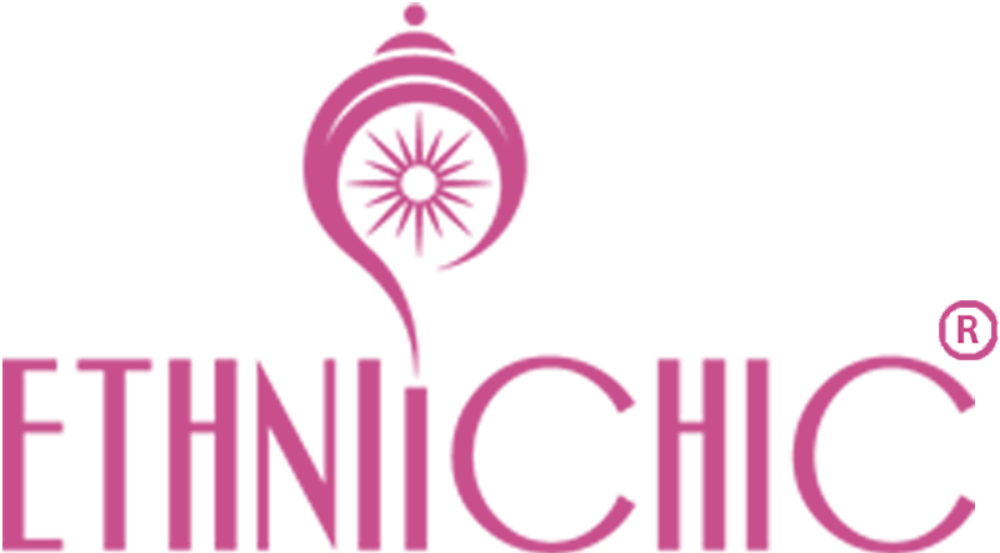Therukoothu Explained: History, Costumes, and How It Differs From Yakshagana
Therukoothu, Tamil Nadu’s vibrant street theatre, brings mythology to life through dance and drama—distinct from Yakshagana and revived today through efforts like EthniiChic’s handcrafted doll.
It was a quiet night in Kanchipuram.
The breeze carried the aroma of jasmine and temple incense. Somewhere in a narrow street corner, under the glow of a single flickering lamp, a crowd was gathering. Kids dangled their feet from the compound walls, women sat cross-legged with toddlers in their laps, and old men leaned on their walking sticks. No tickets. No stage lights. No curtains. Just an open patch of dusty earth.
And then it began — the Therukoothu.
The sharp clang of cymbals and the deep beat of the thavil (a traditional percussion instrument) filled the air. A man dressed in vivid green, his face painted in bold strokes of red and black, stepped into the makeshift arena. He was not just a performer — he was a king, a god, a hero, a villain. The lines between the actor and the character blurred, as storytelling took over.

(Ref: https://mapacademy.io/wp-content/uploads/2022/04/Therukoothu-2-highres-scaled.jpg)
For anyone watching Therukoothu for the first time, it’s impossible not to be swept into its raw energy. If you're familiar with Yakshagana, the dance-drama of coastal Karnataka, you’ll notice the familial resemblance. Both are rooted in mythological storytelling.
Both use elaborate costumes, powerful dialogues, and larger-than-life characters. But just like siblings, they have different personalities. And that’s where the story truly begins.
Two Traditions. One Soul.
At first glance, Yakshagana and Therukoothu seem like long-lost cousins. They both echo India’s obsession with epics — Ramayana, Mahabharata, and Purana tales. Their actors transform into gods and demons using intense makeup, grand headgear, and dazzling costumes.

(Ref: https://undiscoveredindiantreasures.blogspot.com/2011/07/yakshagana.html)

(Ref: https://i.pinimg.com/736x/3e/ea/85/3eea85f6cdb250aca8d628e16037833c.jpg)
But if Yakshagana is regal, rehearsed, and theatrical, Therukoothu is rustic, impulsive, and deeply rooted in the everyday life of Tamil villages. While Yakshagana often unfolds on built stages or temple premises, Therukoothu literally means "street play" — performed in the open, often under the stars, for everyone to see and experience.
A Glimpse into the Past
Therukoothu is not just a performance. It's a tradition — oral, visual, and spiritual — that dates back centuries. Though pinning an exact date is difficult, most scholars trace its roots to early Tamil culture, possibly even Sangam literature (3rd century BCE – 4th century CE), where village storytelling and dramatic performances were common.
It originated from the districts of Salem, Namakkal, Dharmapuri and Erode in Tamil Nadu. It is a mix of Iyal (literature), Isai (Music) and Nadagam (Drama) . Traditionally, it is mainly performed by men and they mostly perform epics like the Mahabharat and Ramayana and literature like the Bhagavad Gita.
For centuries, Therukoothu was a folk ritual, performed during temple festivals, harvest celebrations, or to appease local deities. These weren’t just shows; they were events that bonded communities.
Interestingly, Therukoothu was also a form of moral instruction. At a time when most people were illiterate, this dance-drama became a way to spread values, religion, and philosophy.
The Anatomy of a Performance
A Therukoothu performance is never just a show. It’s a marathon — lasting anywhere between 6 to 12 hours, often from sunset to sunrise.
1. The Structure
Therukoothu follows a three-part structure:
-
Vasanthan (introduction): The narrator (kattiyakaran) sets the stage, often with humor and social commentary.
-
Koothu (main play): The story unfolds through dialogue, dance, and song.
-
Thondu (conclusion): The moral of the story is delivered, often tying into current societal issues.
2. The Music
Live music is the heartbeat of Therukoothu. The harmonium, thavil, mridangam, and nadaswaram create a rhythmic foundation. The actors themselves sing their dialogues in high-pitched, dramatic tones — no lip-syncing here.
Meet the Characters — By Their Faces
The first thing you'll notice in Therukoothu is the makeup. The colours seen on the performers range from pink, orange, red, black, white and green. Depending on the nature of the character, the basic colour changes. It’s not just decoration — it’s identity.

(Ref: https://live.staticflickr.com/65535/49468563011_963ccdb67f_b.jpg)
1. Kings and Heroes
Characters like Arjuna, Rama, or Karna wear tall, jeweled crowns, with gold or silver breastplates and silk dhotis. Their makeup is minimal but noble — red lips, black eyeliner, and a white base.
2. Villains and Demons
These are the showstoppers. They wear fierce expressions, heavy black or red makeup, exaggerated mustaches, and huge shoulder pieces. Their laughter is thunderous, and their voices gravelly.
3. Clowns and Narrators (Kattiyakaran)
Dressed in odd, comical attire — patched-up dhotis, gaudy shirts — they break the fourth wall. They engage the audience, crack jokes, and slip in cheeky political or social satire. They are the voice of the people.
Each character make-up is based on one colour which varies based on the narrative and the intricate decorations atop it. They use coconut oil, talcum powder and water to apply the make-up and ensure that it stays on for at least 8-12 hours even when the performers are sweating.
See more behind the stage photographs for Therukoothu at https://www.behance.net/gallery/17049875/Street-Play-Theru-koothu
Therukoothu vs Yakshagana — Spot the Difference
If you're trying to tell them apart, here’s how:
| Aspect | Therukoothu | Yakshagana |
|---|---|---|
| Language | Tamil | Kannada |
| Setting | Streets, village squares | Temple premises or stages |
| Makeup & Costumes | Simpler, earthy, expressive | More elaborate, with heavy facial paint and ornate head dresses |
| Music | Percussion-heavy, local instruments | Melodic, with background singers and dancers |
| Themes | Ramayana, Mahabharata, local tales | Predominantly Mahabharata-based |
| Style | Rustic, spontaneous, interactive | Dramatic, stylized, and structured |
| Community Role | Deeply embedded in festivals and social events | Strongly tied to temple traditions and formal troupes |
A Modern Muse — EthniiChic’s Tribute to Therukoothu
In a world where tradition often fades in the glare of modernity, it takes passion — and purpose — to preserve cultural treasures. One such initiative comes from EthniiChic, a contemporary brand rooted in heritage art.

With a deep respect for Indian folk traditions, EthniiChic has recently launched a hand-crafted Therukoothu Dancing Doll — a miniature marvel that captures the spirit, posture, and costume of a traditional Therukoothu performer. Inspired by authentic costumes and make-up, this doll doesn’t just sit pretty on a shelf — it tells a story.


The intention behind the doll was not just to create a collectible, but to spark curiosity and start conversations. How many urban homes today know about Therukoothu? What if a child asked, “Why is this doll painted this way?” and found themselves hearing the tales of Karna, Draupadi, and Ravana from a street in Tamil Nadu?

EthniiChic's contribution, though modest in form, becomes mighty in message — celebrating an endangered performance art through everyday decor, and reminding the world that heritage can be playful, artistic, and deeply meaningful.
Fading Spotlight — And the Struggle to Survive
Therukoothu is not just fighting to stay relevant — it’s fighting to survive.
With TV, internet, and OTT platforms flooding even the remotest villages, traditional art forms like Therukoothu are finding fewer takers. What was once an all-night celebration is now often restricted to just one or two hours.
Many veteran performers turn to other jobs for survival. Training young talent has become difficult, especially since it takes years of practice to master the voice modulation, acting, and singing — all in one.
Revival and Resistance
Yet, the art lives on.
Cultural institutions like Kalari Heritage and Charitable Trust & Koothu-P-Pattarai etc have begun training camps, workshops, and documentation projects to keep Therukoothu alive.
Some troupes have even begun performing contemporary themes — including climate change, elections, caste discrimination, and pandemics — while staying true to the traditional form.
Experiencing It For Yourself
If you ever find yourself in northern Tamil Nadu, especially in districts like Villupuram, Kanchipuram, Tiruvannamalai, or Vellore, ask around for Therukoothu shows during temple festivals — especially in Aadi (July–August) and Panguni (March–April).
You won’t need a ticket. Just show up, sit on the ground, and let the night pull you into its tales.
Final Word: A Dance Between Past and Present
Therukoothu isn’t just theatre. It’s a memory in motion. It’s your grandmother whispering a story under the moonlight. It’s a farmer’s way of understanding dharma. It’s a villager’s cinema, temple, and mirror — all rolled into one.
Thanks to artists, troupes, cultural centers — and even design brands like EthniiChic — the art of Therukoothu still dances, still sings, and still asks us: "Have you forgotten your story?"

Email us at contactus@ethniichic.com to know more about our Therukoothu Dancing Doll.



